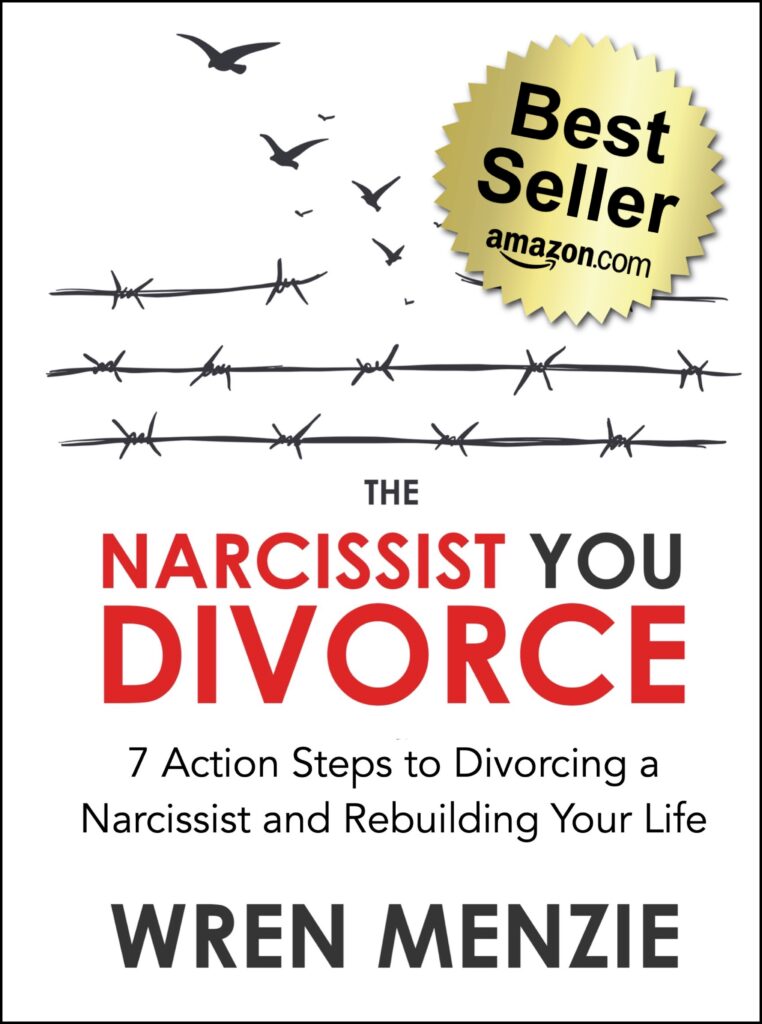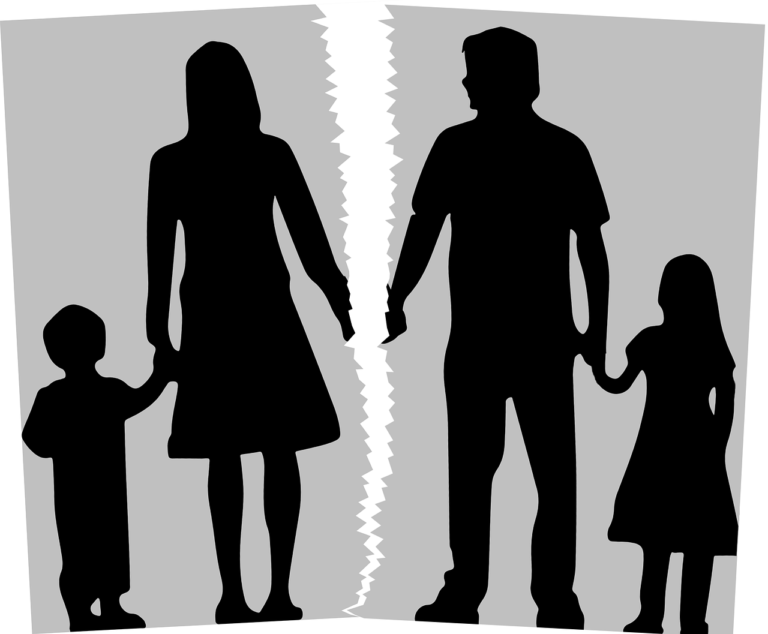Exit Strategies: How to Leave a Narcissist Safely
Wondering How to Leave a Narcissist? Read On…
Choosing to leave an abusive relationship is hard and painful. In a relationship with a narcissist, you might feel alone. They put their needs first, manipulate, and abuse you emotionally. Know that you’re not alone. Leaving takes strength and courage, but it’s possible for you.
This article will guide you to ensure your safety, make a plan to leave, and take back your life from narcissistic abuse. We’ll look at how narcissists operate, recognize emotional abuse, and understand its impact. We will discuss legal issues, how to cut contact, set boundaries, and start healing emotionally.
Table of Contents
The most important thing to understand is that you deserve love, respect, and a life without being subject to abusive behaviors. We will help you every step on your path to freedom and growth. Remember, you’re not facing this journey alone.
Key Takeaways:
- Leaving a narcissistic relationship requires strength, courage, and support.
- Recognize emotional abuse and manipulation patterns to break free.
- Plan a safe exit by prioritizing your safety and gathering support.
- Prepare for potential narcissistic retaliation and manipulation post-breakup.
- Understand the legal and financial considerations of leaving a narcissist.
Understanding Narcissistic Personality Disorder
Understanding narcissistic personality disorder (NPD) is key to handling a narcissist. NPD involves grandiosity, a need for admiration, and a lack of empathy. It affects both the narcissist and those close to them deeply.
Defining Narcissistic Personality Disorder and its Impacts
Narcissistic personality disorder is a condition where one has an inflated self-view, seeks excessive admiration, and lacks empathy. It harms personal relationships. Narcissists manipulate and struggle to connect genuinely with others.
Masks Narcissists Wear: Altruist, Grandiose Superior, Vulnerable Victim
Narcissists hide their true selves with masks. The altruistic narcissist appears caring but manipulates through kindness. The grandiose superior feels superior, needing to be seen as the best. Meanwhile, the vulnerable victim plays on sympathy by seeming helpless.
Narcissistic Injury: What Happens When They’re Rejected?
Rejection or a hit to their self-esteem causes narcissistic injury. They may react with rage, insult, or pull away. Narcissists can’t deal with rejection, seeing it as a threat to their worth. They might act out against those they blame.
| Narcissistic Personality Disorder (NPD) | Impacts |
|---|---|
| Definition: A mental health condition characterized by an inflated sense of self-importance, need for admiration, and lack of empathy. | Personal Relationships: Manipulative behaviors, difficulty forming genuine connections, strained relationships. |
| Masks: Altruistic Narcissist | Uses acts of kindness to manipulate and control others. |
| Masks: Grandiose Superior Narcissist | Exaggerated sense of self-importance, seeks validation and superiority over others. |
| Masks: Vulnerable Victim Narcissist | Possesses a guise of helplessness and victimhood to elicit sympathy and attention. |
| Narcissistic Injury: Rejection | Triggers intense emotional reactions, defensive behaviors, and retaliation against those deemed responsible. |
The Complexities of Narcissistic Relationships
Emotional abuse and manipulation are common in narcissistic relationships. It’s vital to spot and comprehend these patterns. Being aware helps individuals defend themselves and find support. We aim to enhance your understanding of these difficult situations.
Identifying Emotional Abuse and Manipulation Patterns
Narcissists are experts at control through manipulation. Techniques include gaslighting, shifting blame, guilt trips, and verbal abuse to create cognitive dissonance and invalidate you. Recognizing these hurtful things as emotional abuse is key. They damage your self-esteem and emotional health.
Interpreting Love Bombing and Trauma Bonding
Love bombing is a common early tactic by narcissists. It’s marked by extreme flattery, attention, and affection, creating euphoria. These may seem like good things, but you should recognize them as red flags. The goal is to make you dependent. As the abuse continues, a trauma bond may form. This is a strong emotional attachment in response to abuse. It’s crucial to identify this to start healing.
Signs of Narcissistic Abuse and its Effects on Partners
Look out for signs like constant criticism, demeaning behavior, jealousy, control, and no empathy in your relationship. Narcissists are master manipulators and narcissistic abuse deeply impacts victims, causing issues like low self-esteem, anxiety, depression, and post-traumatic stress disorder.
Grasping the complexities of narcissistic relationships, spotting emotional abuse, understanding love bombing and trauma bonding, and recognizing abuse signs enable you to move away from toxic cycles. This way, you prioritize your health and happiness. While it may be tempting to give abusive people a second chance, the reality is that bad things will escalate the next time they occur. Use your own judgment, but be aware that the most effective ways to eliminate abuse are to reduce or eliminate all contact with the narcissist.
If there has been physical abuse within your relationship, the best thing to do is to file police reports to document the occurrences. The National Domestic Violence Hotline (1-800-799-SAFE) can help additional resources you can utilize when you’re leaving the toxic relationship.
Preparing to Leave a Narcissist
Getting ready to leave a narcissist and an abusive situation is crucial for getting your life back. It’s a big move to escape a harmful relationship, whether it’s a family member or a narcissist partner. Think about your emotional health first and make a smart exit plan. Here are some steps to think about:
- Emotional Preparation: Spend time understanding your feelings and building a group of people who support you. Consider therapy or counseling to deal with the tough emotions and hurt from being with a narcissist.
- Financial Preparation: Make sure your money and property are safe. This might mean opening your own bank account, obtaining new debit cards and credit cards, keeping track of your financial details, having spare cash on hand, and talking to a financial advisor if you need to.
- Gathering Important Documents: Get your hands on all crucial papers like ID, financial records, and legal papers and keep them in a safe place. Having these ready makes your move smoother and keeps your rights safe.
- Developing a Support System: Find friends, family, or a support group who understand what you’re going through. Having a trusted friend and people who care about you to lean on for emotional support makes you stronger and helps you stick to your plan, even when it gets hard.
Choosing to leave a narcissist shows you’re taking steps to heal and live a better life. By focusing on your emotions, protecting your finances, collecting key documents, and surrounding yourself with support, you’re moving towards a hopeful future. Stay strong, seek assistance when you need it, and remember, you’re not going through this alone.
Recognizing the Need to Prioritize Your Safety
When you decide to leave a narcissist, putting your safety first is crucial. You need to take steps to protect both your body and mind. This means making a safe plan to leave, setting up safety measures, and getting help from people who care about you.
Ensuring Physical and Mental Well-Being
Taking care of your physical and mental health is key during this time. Focus on self-care, look after your emotions, and get help if you need it. Do things that make you happy, use methods to relax, and stay around those who make you feel good.
Creating a Safe Exit Plan
Leaving a narcissist safely means making a detailed plan. Make sure to keep important papers safe, pack a bag of basics, and figure out the best way and time to go. A well-thought-out plan helps you avoid risks and move on more smoothly.
Gathering Support and Strengthening a Support Network
Having a strong circle of support is important when leaving a narcissist. Talk to friends, family, groups, or professionals who can offer advice, understanding, and help. A good support network gives you validation, safety, and encouragement as you go through this tough phase.
| Ways to Ensure Safety During the Exit | Self-Care Strategies for Mental Well-Being | Steps to Create a Safe Exit Plan | Building a Strong Support Network |
|---|---|---|---|
| Secure important documents | Engage in activities that bring joy | Plan the best time and method to leave | Reach out to trusted friends and family |
| Create a safety bag with essential items | Practice relaxation techniques | Consider safety precautions to minimize risks | Seek support from support groups |
| Avoid sharing escape plans with the narcissist | Surround yourself with positive influences | Ensure availability of important resources | Seek professional support |
| Inform trusted individuals about the situation | Nurture your emotional well-being | Stay connected with supportive individuals during the exit | Build a network of empathetic professionals |
What to Expect When You Start to Leave a Narcissist
Leaving a narcissist can be tough and complicated. Knowing what to expect helps you be more confident. Be ready for the narcissist to try and make you feel guilty or threaten you. They will definitely not like it when they realize the narcissistic supply they’ve been getting from you has come to an end.
Narcissists use mind games to keep control and make you stay. They might act like victims to make you feel bad. Recognizing these tricks helps you fight back.
Abusive narcissists often gaslight you, making you question your reality. This can make you doubt yourself. Stay true to your experiences and get help from people you trust.
To deal with gaslighting, make clear boundaries and stop talking to the narcissist. Make a clean break. Blocking them online and keeping them from your social media accounts can help keep you immune from more mind games. It’s important to look after your own health and happiness.
It takes bravery to leave a narcissist, but knowing what to expect helps. By understanding their tactics, you can leave stronger and start a new life without them.
Legal and Financial Considerations
When leaving a narcissist, knowing the legal and financial steps to take is important. This ensures your safety and keeps your assets safe. The divorce process is tricky, so getting legal advice from an experienced divorce attorney is key.
An experienced attorney can guide you through the process. They help you understand your rights and options. This way, you can navigate the divorce well.
To document abuse, keep a detailed record of any negative encounters. These records are key for getting restraining orders and other legal protection. They help keep you safe from further harm.
Being financially independent is also critical. Before leaving a narcissist, make sure your finances are stable and your assets are protected. A financial advisor can help you make a plan. They help ensure your money and resources are secure.
It’s vital to seek help for legal and financial issues to make leaving smoother. Professional guidance helps protect your rights. Reach out for help when you need it during this time.
See also: How to Divorce a Narcissist: Win with Tips and Strategies
You might be interested in the book I wrote: The Narcissist You Divorce: 7 Action Steps to Divorcing a Narcissist and Rebuilding Your Life

How to Leave a Narcissist
Leaving a narcissist safely needs a strong exit strategy. You’ll find different ways to do this, based on your situation.
One way is to slowly pull away. This means bit by bit distancing yourself, cutting down contact over time. It helps in making things less tense and keeps you safer from their backlash.
Or, you can choose to make a quick exit. This involves ending things fast and stopping all contact suddenly. It’s tough but can shield you from more harm and control.
The no contact rule is vital in this process. Avoid any kind of talk or meeting with them. It’s crucial to set clear limits for your own good. This prevents the narcissist from pulling you back in.
It’s important to cut off all ways they can reach you. Block them on social media, and change your phone and email if you must. It’s a way to keep yourself safe from their tricks.
Remember, it’s not easy to leave a narcissist. Always put your emotional and physical safety first. Get as much support as you can. Reach out to your best friend, other close friends or family who may have had similar experiences, or professionals who can support you. Remember that mutual friends that you share with the narcissist may not always have your back. One of the hardest things to understand is that such relationships weren’t what you thought they were.
Maintaining No Contact and Protecting Personal Boundaries
To heal and move on after leaving a narcissistic partner, maintaining no contact is key. This rule helps protect your boundaries and boosts your emotional health.
Importance of No Contact Rule
Cutting off all communication with your narcissistic ex is what the no contact rule is about. This includes calls, texts, emails, and social media. It’s vital for breaking free from their grip. By doing this, you create a safe space for yourself and stop further emotional harm.
The no contact rule has many benefits. It helps you:
- Focus on healing emotionally.
- Get back your independence and build a stronger self-image.
- Stop the cycle of manipulation and abuse.
- Shield yourself from more gaslighting and mind games.
- See the relationship’s toxic nature more clearly.
Strategies for Boundary Maintenance
To maintain no contact, it’s crucial to set firm personal boundaries. Here are ways to keep and protect your boundaries:
- Block all communication: Block your ex’s phone number, email, and social media. This reduces the chance of contact and discourages them from trying to pull you back in.
- Inform mutual acquaintances: Tell friends and family about the breakup. Ask them to respect your choice of no contact. This stops messages or news from them reaching you accidentally.
- Practice self-care: Take time for yourself and do things that make you happy and peaceful. This keeps you focused on your well-being.
- Seek support: Get help from friends, family, or groups who understand your situation. A strong support network can keep you dedicated to staying away.
Handling Hoovering Attempts by the Narcissist
Hoovering is when narcissists try to pull you back into their control. Here’s how to handle their attempts:
- Stay strong: Remember why you chose no contact. Engaging with the narcissist only keeps the toxic cycle going.
- Ignore and delete: Don’t reply to any hoovering messages. Erase them to keep your boundaries strong.
- Seek support: Get help from your friends and family when hoovering happens. They can offer strength and advice on handling it.
By keeping no contact and safeguarding your boundaries, you’re taking big steps towards healing. This is crucial for moving on from a narcissistic partner.
| No Contact and Boundary Maintenance Strategies | Benefits |
|---|---|
| Block all communication | Prevent direct contact and minimize manipulation |
| Inform mutual acquaintances | Prevent inadvertent messages and updates |
| Practice self-care | Stay grounded and prioritize well-being |
| Seek support | Stay committed to maintaining no contact |
Emotional Recovery After Leaving a Narcissistic Partner
Leaving a narcissistic partner is a big step in getting your life and happiness back. But, healing isn’t just about moving out or away. It’s important to deal with the emotional harm suffered during the relationship. This helps you regain your confidence and self-worth.

Finding professional help is key in recovering from a narcissist’s abuse. A trained therapist can guide you through the tough emotions that follow a breakup. They offer support and advice specific to your situation. Healing from all this may take a long time, but the length of time isn’t the only thing to consider. Different people will need to work on different things to establish healthy ways and regain their own sanity.
After healing, building healthy relationships is crucial. Make sure to look after yourself and set firm boundaries. Know your own needs before you enter into a new relationship This helps you form connections that are respectful and kind. Remember, you deserve relationships that make you feel supported and valued.
Navigating Co-Parenting with a Narcissistic Ex-Partner
Co-parenting with a narcissistic ex-partner can be hard. However, it’s important to keep your children’s best interests in mind. Setting firm boundaries helps lessen conflict and ensures a healthier co-parenting setting.
Parallel parenting is a good way to co-parent with a narcissist. This method lets you both focus on your children’s needs, without much interaction. It helps avoid conflict and manipulation by keeping direct contact to a minimum.
Using email or text messages for communication can be effective. It creates a clear record, avoiding misunderstandings or manipulation. Make sure to be brief, polite, and keep the focus on your children in these messages.
Sometimes, bringing in professional mediators or therapists helps. They can aid in discussions, solve conflicts, and give unbiased advice. Mediation offers a safe environment for both parents to find solutions that benefit everyone.
| Benefits of involving professional mediators: | What they can help with: |
|---|---|
| Neutral third-party | Facilitating communication |
| Promoting constructive dialogue | Resolving conflicts |
| Providing guidance and support | Creating effective co-parenting plans |
Always put your children’s well-being first in co-parenting. Aim to give them a loving and stable environment. By doing so, you minimize their stress from the narcissistic behavior of an ex-partner. This way, your children can grow up healthier and happier.
Starting Anew: Building a Narcissist-Free Life
Leaving a narcissistic partner means it’s time for a fresh start. You should focus on growing personally and taking care of yourself. It’s also key to rebuild your social circle and strengthen your support network. Understanding how to sidestep future toxic relationships is crucial for a happy, healthy life ahead.
Focusing on Personal Growth and Self-Care
Prioritizing your growth and self-care is vital. Take time to heal from the hurt the relationship caused. Rediscover your self-worth. Therapy or counseling can offer the support you need during this period. Looking after your physical and mental health helps you move on to a better life.
Rebuilding Social Networks and Support Systems
It’s important to rebuild your social life. Surround yourself with people who uplift you. This helps build trust and form healthy relationships. Reconnect with friends and family you might have lost touch with. Also, consider joining support groups or doing activities you enjoy. Having a solid support systemis key to overcoming challenges and keeping your life narcissist-free.
Recognizing and Avoiding Future Narcissistic Relationships
Learning how to spot and avoid future toxic relationships is also critical. Reflect on your past relationship to identify warning signs. Use this insight to guard against similar situations. Trust your gut and establish firm boundaries early on. Aim for connections that are balanced and healthy. Be wary of anyone who seems to show narcissistic behaviors or tries to manipulate you.
| Starting Anew: Building a Narcissist-Free Life |
|---|
| Focusing on Personal Growth and Self-Care |
| Rebuilding Social Networks and Support Systems |
| Recognizing and Avoiding Future Narcissistic Relationships |
Leave a Narcissist Safely and Begin Life Anew!
Leaving a narcissist is a brave step that puts your health first. It leads to fresh starts. This article has covered the twists of narcissistic relationships and noted signs of emotional abuse. We also talked about making a safe exit plan. Tips on keeping no contact, safeguarding personal boundaries, and handling legal and financial issues were given.
When you focus on safety and lean on a supportive circle, you take key steps to escape a narcissist’s grip. Healing from this abuse is a journey. Be gentle with yourself. Seeking therapy and professional advice is crucial for emotional healing, processing trauma, and boosting self-respect.
Starting anew, focus on self-improvement and caring for yourself. Create a positive circle, build back social networks, and learn to spot warning signs to dodge future narcissists. You’re meant for an abuse-free life, happy relationships, and self-satisfaction.
You’re not walking this path alone. Armed with insights and strategies from this article, you’re set to face the hurdles of leaving a narcissist. You can look forward to new starts, knowing your well-being is most important. There’s hope and power in healing.
FAQ
What are some strategies for leaving a narcissistic partner safely?
To leave a narcissistic partner, start by getting your feelings and money in order. Then, plan your exit in a safe way. It’s also key to have a strong circle of friends and family to lean on.
How can I prioritize my safety when leaving a narcissist?
Keeping yourself safe is crucial. Develop a solid exit strategy with safety measures in place. Make sure your support network is strong to protect your mental and physical health.
What should I expect when I start to leave a narcissist?
Leaving a narcissist might provoke them into trying to make you feel guilty or scared. Be ready to stand strong against their mind games and attempts to control you afterwards.
What legal and financial considerations should I be aware of when leaving a narcissist?
Get advice from a lawyer and keep a record of any abuse. Work towards financial independence and safeguard your assets. Getting a restraining order might be needed for your safety.
How can I maintain no contact with a narcissist after leaving?
Keep a no contact policy, establish clear boundaries, and be prepared for the narcissist’s attempts to reach out or regain control.
How can I recover emotionally after leaving a narcissistic partner?
Healing emotionally means working through the abuse you’ve faced. Build back your confidence and self-worth. Consider seeking therapy tailored for those recovering from narcissistic abuse and surround yourself with healthy relationships.
How can I navigate co-parenting with a narcissistic ex-partner?
Setting strong boundaries is crucial. You might need to use parallel parenting and communicate in writing. Including mediators or therapists can help, especially when keeping the kids’ best interests at heart.
How can I start anew and build a narcissist-free life?
Focusing on your own growth and self-care is the first step to a fresh start. Rebuild your social circle with people who uplift you and learn how to spot narcissists to avoid them in the future.







2 Comments